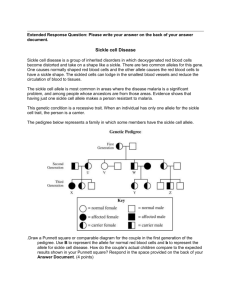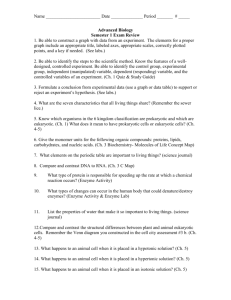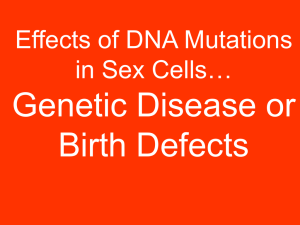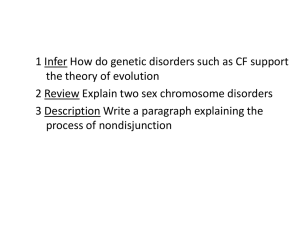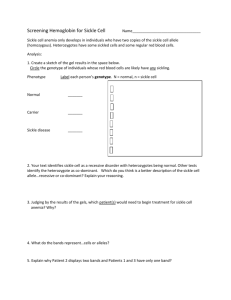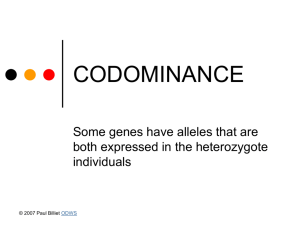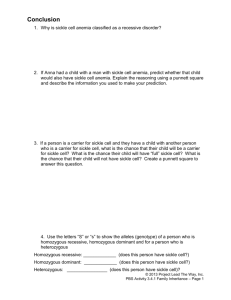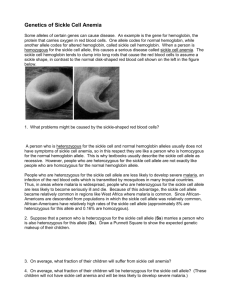Sickle Cell Anaemia change in allele freq
advertisement
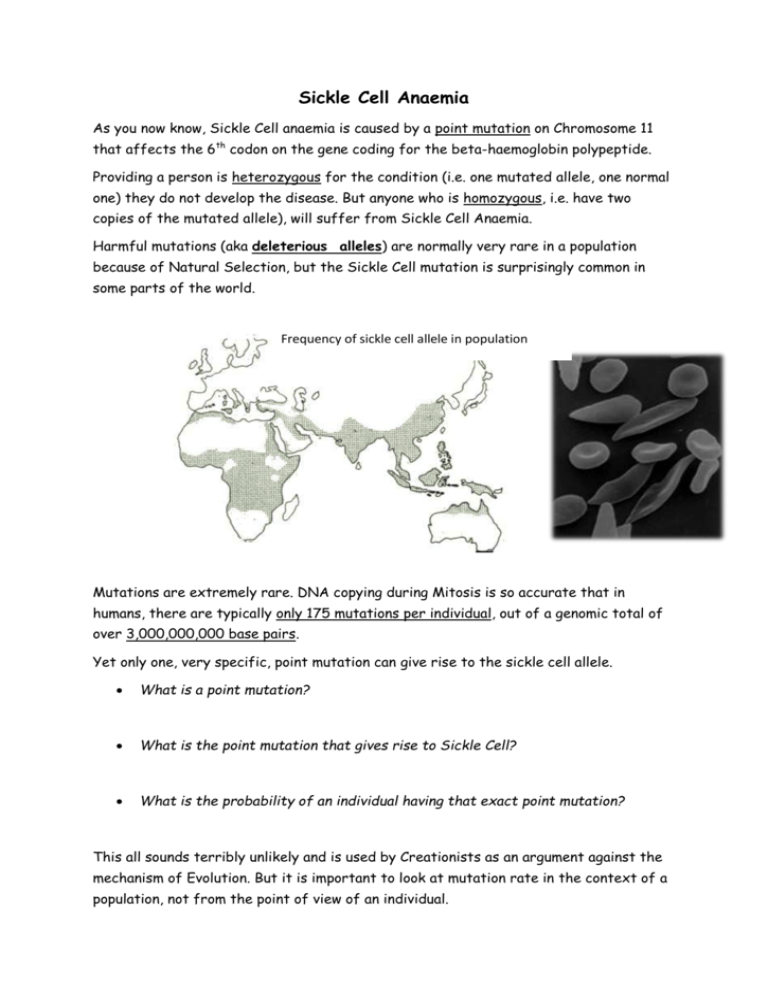
Sickle Cell Anaemia As you now know, Sickle Cell anaemia is caused by a point mutation on Chromosome 11 that affects the 6th codon on the gene coding for the beta-haemoglobin polypeptide. Providing a person is heterozygous for the condition (i.e. one mutated allele, one normal one) they do not develop the disease. But anyone who is homozygous, i.e. have two copies of the mutated allele), will suffer from Sickle Cell Anaemia. Harmful mutations (aka deleterious alleles) are normally very rare in a population because of Natural Selection, but the Sickle Cell mutation is surprisingly common in some parts of the world. Frequency of sickle cell allele in population Mutations are extremely rare. DNA copying during Mitosis is so accurate that in humans, there are typically only 175 mutations per individual, out of a genomic total of over 3,000,000,000 base pairs. Yet only one, very specific, point mutation can give rise to the sickle cell allele. What is a point mutation? What is the point mutation that gives rise to Sickle Cell? What is the probability of an individual having that exact point mutation? This all sounds terribly unlikely and is used by Creationists as an argument against the mechanism of Evolution. But it is important to look at mutation rate in the context of a population, not from the point of view of an individual. Plasmodium falciparium is thought to have evolved between 3,500 to 7,000 years ago. Assume that the human population of Africa has been around 10,000,000 during that time. In that population, assume that there are 2,000,000 adult women who are reproducing, having, on average, one baby per year each. How frequently will the Sickle Cell mutation appear in the population? Why might the mutated allele become more common in the population? Use the notation HbN (= normal allele) and HbS (= sickle allele) to show: a) The different possible genotypes in the population b) The phenotypes of those genotypes c) The result of a cross between two carriers… Suggest a reason for why the Sickle Cell allele provides protection against the malarial parasite…
